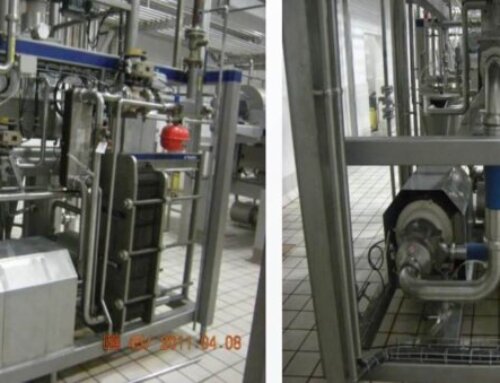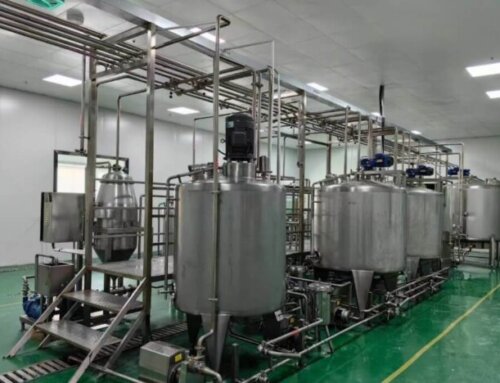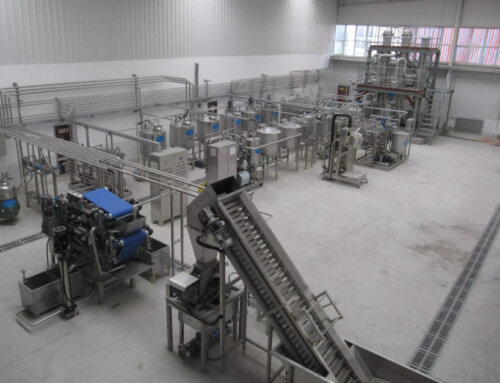As one of the most popular varieties of plant protein beverages, soy milk is prone to various quality problems during processing due to inappropriate technology or improper operation. Today’s article mainly shares the common quality problems and measures during the soya milk production.

Protein Denaturation Precipitation
The flocculent precipitate was mainly caused by protein denaturation in soya milk production. The main reasons are: improper use of stabilizers; too long production time; bacteria have been contaminated before bottling or canning, so that the pH of soymilk has dropped to close to the isoelectric point; improper filtration of materials, poor homogenization effect, sterilization temperature is too high or cooling time is too long, etc. These problems can be solved by selecting appropriate stabilizers and strengthening process technology management.
After secondary sterilization of full-fat soymilk, the protein may cause flocculent precipitation due to denaturation. In order to reduce the formation of precipitation, sodium bicarbonate can be added when the soybean is soaked in water, adjust the pH value of the soymilk to be above 6.5 after refining. When blending and formulation of soya milk, add 0.3%-0.4% of gelatin and other stabilizers, then stir, homogenize, sterilize and fill into containers.
Fat Precipitation
The appearance of cellulite is due to the precipitation of fat, which is attached to the neck of the glass bottles. Before sterilization, a pressure of 25Mpa is used for homogenization. If it can be homogenized twice, the effect will be better, and the fat globule can be completely broken to prevent the appearance of cellulite.
Browning
The sugar added to the soy milk will brown due to the Maillard reaction after secondary sterilization and high-temperature treatment. After the soybean milk is deodorized, sterilized and homogenized, sugar is added when it is cooled to 30°C, and then blending, second sterilizing and homogenizing can avoid the problem. We can also add sweeteners instead of sucrose, or reduce secondary sterilization temperature and time to reduce the browning reaction.
Beany Flavor
It is necessary to inactivate lipoxygenase to prevent the beany odor. The inactivation temperature of lipoxygenase is 80-85°C, and it can be inactivated by heating. There are two methods for processing soy milk: dry milling(dry soybean after heating will be milling) and wet milling(soybean will be soaked and blanched then milling), and wet milling has a strong beany flavor because the activity of lipoxygenase is enhanced during soaked.
In the process of inactivating the enzyme by heating, the heating will also denature the protein, reduce the solubility of the protein, and is not conducive to extracting protein during refining. Therefore, on the one hand, it is necessary to prevent the production of beany odor, and on the other hand, it is necessary to maintain the high solubility of soy protein.
At present, the best methods of inactivating enzymes are:
- UHT sterilization after refining: It can be done with UHT tubular sterilizer (135℃ for 2S) or DSI sterilizer (150℃ for 0.1S), then quickly cooled to room temperature for filling. It can effectively remove the beany smell and prevent protein denaturation.
- Adjusting pH value: Using the characteristic that lipoxygenase is inhibited under acidic conditions, adjust the pH value to about 3.5 during soybean soaking or grinding, then heat to inactivate the enzyme, and adjust the pH value to 6.5 with sodium bicarbonate again, which can prevent protein flocculation and precipitation at the isoelectric point.
- Use proteolytic enzymes to act on lipoxygenase to remove the beany smell.
Bitterness
The bitterness in soymilk comes from various bitterness substances produced during processing, including lipid choline, bitter peptides produced by protein hydrolysis, and flavonoids. The prevention method is to control the degree of protein hydrolysis during the soya milk processing, add glucolactone, control the heating temperature and time, and control the soymilk to be close to a neutral beverage.
Bad Taste
High-quality soymilk should have a fine texture, soft taste, and good product stability during storage; for poor-quality soymilk, the texture is rough, there is a feeling of particles, the product stability is poor, and there will be precipitation in storage. In order to avoid this situation, in the soybean refining process, selecting appropriate gears and filters, and the soybean milk is treated with two-stage homogenization can avoid this problem.
Expansion Pack and Deterioration
Some soymilk is stored for a period of time, it becomes sour, smelly, water and milk are layered, and gas rushes out after opening the lid. The reason is that it is caused by microorganisms. The main sources are serious pollution of raw materials, such as low soybean peeling rate, many residual microorganisms in production pipelines, unclean environment, and low sterilization intensity. The method to eliminate expansion pack and deterioration is: the peeling rate of soybeans is higher than 80%, and the CIP system is used to regularly clean the pipeline, and improve the sterilization intensity.




